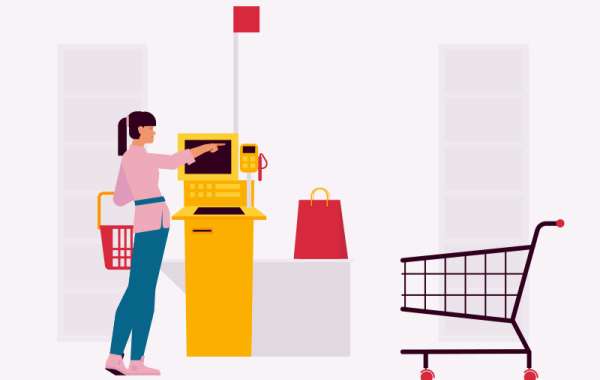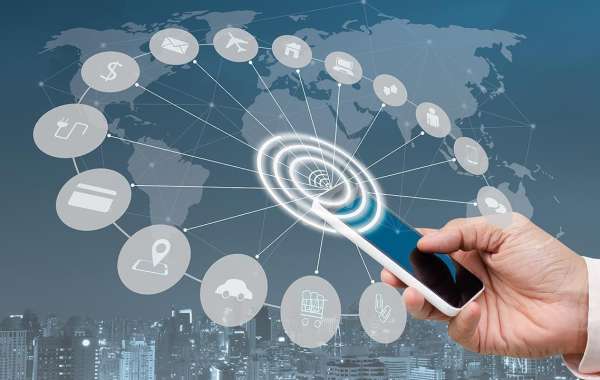Self-Service Technology Market Overview:
The Self-Service Technology market industry is projected to grow from USD 33.7 billion in 2022 to USD 73.8 billion by 2030, exhibiting a compound annual growth rate (CAGR) of 11.87% during the forecast period (2022 - 2030).
The self-service technologies market is witnessing significant growth as businesses and consumers increasingly embrace automation and convenience in various industries. Self-service technologies refer to automated systems that allow users to perform tasks or transactions independently, without the need for human assistance. These technologies are designed to streamline processes, enhance efficiency, and improve customer experiences.
[PDF Brochure] Request for Sample Report:
https://www.marketresearchfuture.com/sample_request/927
Key Companies:
The self-service technologies market is highly competitive, with several key players dominating the industry. Some of the prominent companies operating in this market include:
- NCR Corporation
- Kiosk Information Systems
- Fujitsu Limited
- Diebold Nixdorf, Incorporated
- Glory Limited
- Azkoyen Group
- Crane Co.
- HESS Cash Systems GmbH & Co. KG
- IBM Corporation
- Hitachi, Ltd.
These companies offer a range of self-service technology solutions, including interactive kiosks, ATMs (Automated Teller Machines), vending machines, and self-checkout systems, to cater to the diverse needs of businesses and consumers.
Industry Latest News:
In recent news, NCR Corporation, a leading player in the self-service technologies market, announced the launch of its latest self-checkout system that features advanced scanning and payment capabilities, enhanced security features, and a user-friendly interface. This new self-checkout system aims to provide retailers with a seamless and efficient self-service experience for their customers.
Another significant development in the self-service technologies industry is the partnership between Kiosk Information Systems and a major fast-food chain. This collaboration aims to deploy self-service kiosks in restaurants to enable customers to place orders and make payments independently, reducing waiting times and enhancing the overall dining experience.
Market Opportunities:
The self-service technologies market presents several lucrative opportunities for both established players and new entrants. The increasing demand for automation and self-service solutions, the need for improved efficiency and cost savings, and the rising preference for contactless transactions are some of the factors driving market growth.
Furthermore, the integration of self-service technologies with other industries, such as healthcare, transportation, and retail, offers significant opportunities. For example, self-service kiosks can be used in healthcare facilities to automate patient check-ins, reduce administrative burden, and improve the overall patient experience.
Additionally, the market is witnessing a surge in demand for self-service technologies in emerging economies. These economies often have a large population and limited access to traditional services, making self-service technologies a viable and inclusive solution for various transactions and services.
Market Segmentation:
The self-service technologies market can be segmented based on type, end-user, application, and region.
Based on type, the market can be categorized into interactive kiosks, ATMs, vending machines, self-checkout systems, and others. Interactive kiosks enable users to access information, make purchases, or perform transactions through a touch screen interface. ATMs provide cash withdrawal and other banking services, while vending machines offer a wide range of products for purchase. Self-checkout systems allow customers to scan and pay for items independently, reducing the need for cashier assistance.
By end-user, the market can be classified into retail, healthcare, transportation, banking and finance, hospitality, and others. Retail is the dominant end-user segment, driven by the increasing adoption of self-service kiosks and self-checkout systems in supermarkets, convenience stores, and shopping malls.
Based on application, the market can be segmented into information and ticketing, financial services, retail and hospitality, healthcare, transportation, and others. Each application focuses on specific tasks or transactions that can be automated through self-service technologies, contributing to improved efficiency and customer experiences.
Regional Insights:
The self-service technologies market is geographically diversified, with key regions including North America, Europe, Asia Pacific, Latin America, and the Middle East and Africa. North America dominates the market due to the presence of major players, advanced technology infrastructure, and the high adoption rate of self-service technologies in various industries.
Europe is also a significant market for self-service technologies, driven by the increasing demand for automation and convenience in retail, transportation, and banking sectors.
Asia Pacific is witnessing rapid growth in the self-service technologies market, fueled by urbanization, the rise in digital payments, and the need for improved efficiency in customer service. The region offers immense opportunities for market players, especially in emerging economies such as China, India, and Southeast Asian countries.
Browse a Full Report: (Including Full TOC, List of Tables & Figures, Chart) @
https://www.marketresearchfuture.com/reports/self-service-technologies-market-927
The self-service technologies market is experiencing substantial growth as businesses and consumers embrace automation and convenience. Key companies in the market offer a range of self-service technology solutions to cater to the diverse needs of industries. The market presents various opportunities, including the integration of self-service technologies with other industries, the adoption of self-service technologies in emerging economies, and the demand for automation and contactless transactions. Geographically, North America dominates the market, while Europe and Asia Pacific are witnessing significant growth.




